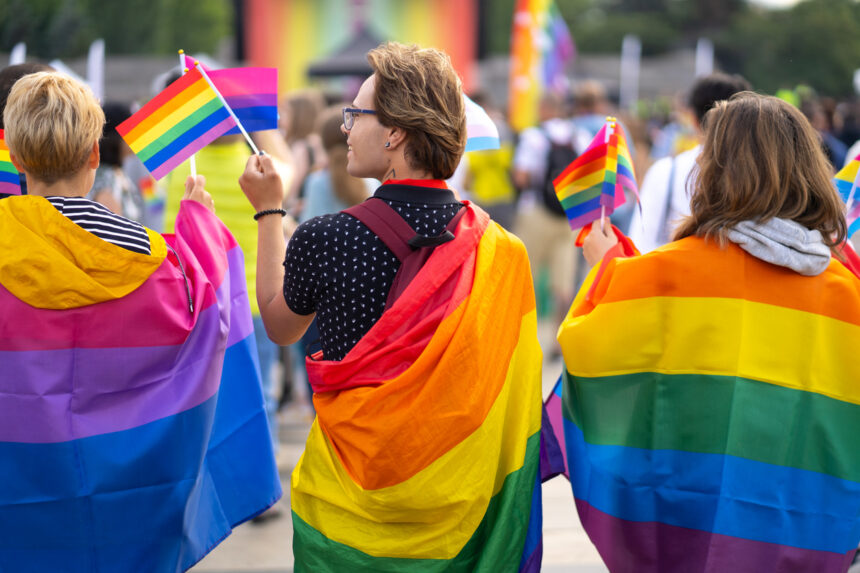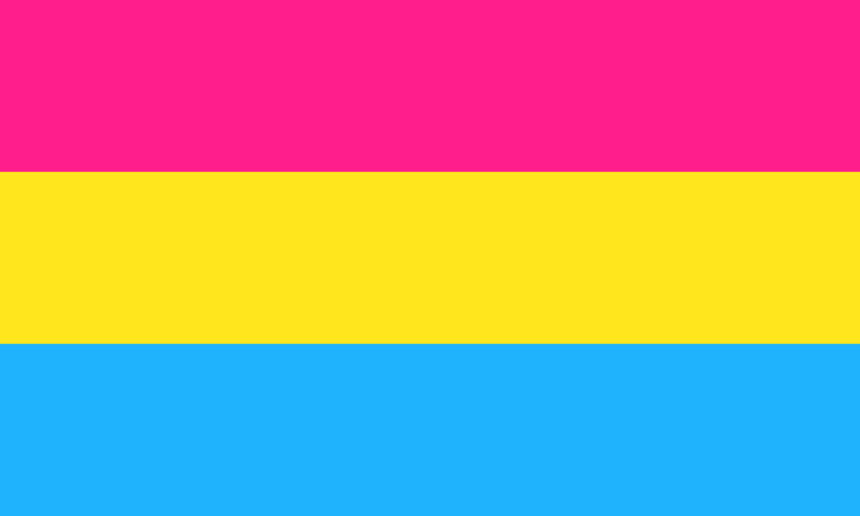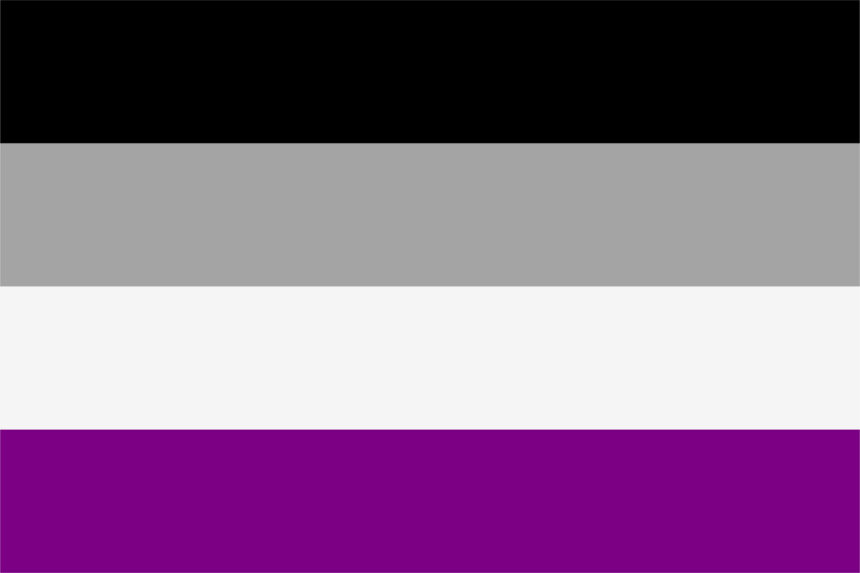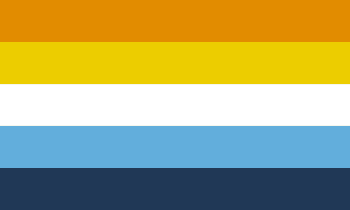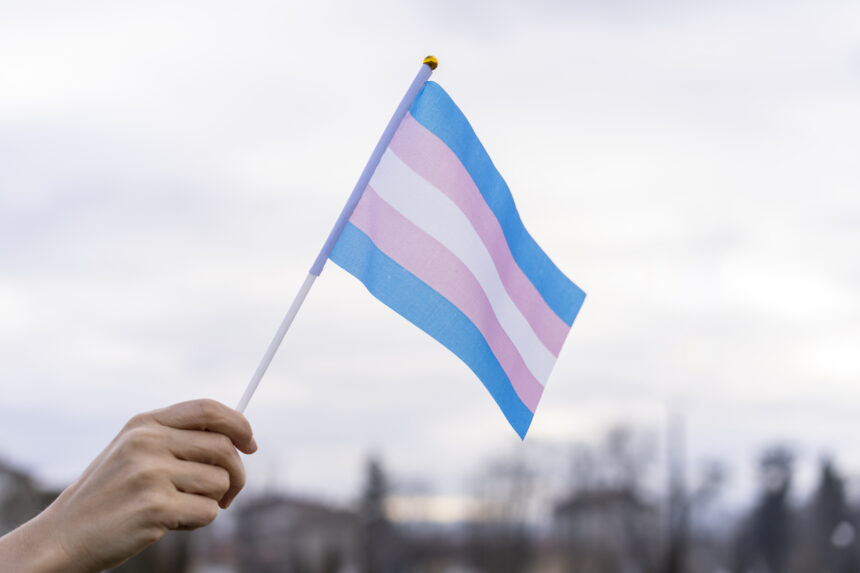Pride Flags for Everyone
Because sexuality and gender identity exist on a spectrum, it is hard for many to definitively identify with any label or a flag. Nonetheless, a range of flags and terminology have developed over recent decades in order for those who identify with them to stand united under one symbol and make themselves known. Some of these flags have their roots around the 1968 Stonewall riots, while others have more modern origins, including a surge of them from inclusive social media platforms, such as Tumblr.
The Pride Flags
Gilbert Baker Pride Flag
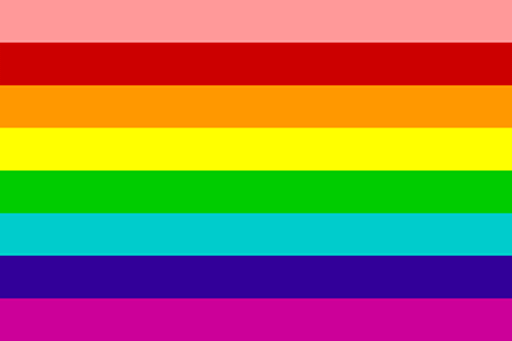
Meaning
According to Ivy Tech Libraries, the meaning of each color is: “hot pink for sex, red for life, orange for healing, yellow for sunlight, green for nature, turquoise for art, indigo for harmony, and violet for spirit”.
Creation
1977 by Gilbert Baker and other artists
History
This is the first of the Pride flags, created by military veteran, openly gay man, and artist Gilbert Baker. According to CapitalEAP, in 1977, he was asked by gay rights activist and San Francisco City Supervisor Harvey Milk to design a symbol for the “gay community” (not called the LGBT community back then). Inspired by the iconic song “Over the Rainbow” from the 1939 movie The Wizard of Oz, a classic that had long been a reference in the community (notably with the expression “friend of Dorothy” which meant a gay person), he came up with this colorful flag.
Six-Color Pride Flag
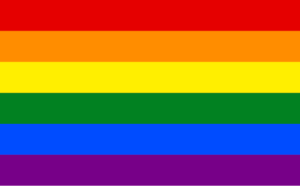
Meaning
Contrary to popular belief, it does not only represent gay people. It represents all non-heterosexual and non-cisgender people. The colors of the rainbow represent the variety of people in the community.
Creation
1979 by Gilbert Baker
History
After the assassination of Harvey Milk on November 27, 1978, the demand for physical Pride flags rose. However, the hot pink-colored fabric was hard to find, so it was removed from the design, becoming a seven-striped flag. Additionally, in 1979, the flag was used as long banners decorating lamp poles for the San Francisco Pride Parade. In order to make a balanced design with three stripes on each side, Baker removed the turquoise stripe and also transformed indigo and violet into blue and purple in order to better fit in with the other colors. Thus was born the most widely recognized symbol of Pride in the world.
Progress Pride Flag
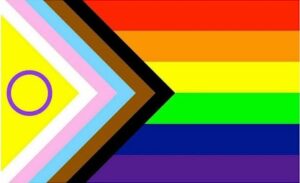
Meaning
A more inclusive version of the classic Pride flag. In addition to the six colors, it also features the symbol for intersex people, the transgender flag colors, and brown and black bands to represent people of color, whose activism for the cause has been historically intertwined and deeply significant.
Creation
2021 by Daniel Quasar and Valentino Vecchietti
History
This flag was originally designed by non-binary artist Daniel Quasar in 2018. Inspired by the 2017 Philadelphia Pride Flag, an eight-stripe flag with brown and black stripes at the top, Quasar created a chevron to include those two stripes, as well as colors from the transgender flag. In 2021, Valentino Vecchietti of Intersex Equality Rights UK added the intersex colors and symbol in order to make the design even more inclusive.
Sexuality Flags
Modern Gay Pride Flag
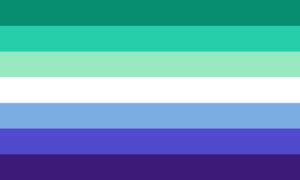
Meaning
The flag for gay men. The colors represent nature, masculinity, and gender nonconformity.
Creation
2019 by @gayflagblog
History
This flag is inspired by an older design that had a variety of blue stripes. However, to get out of gender stereotypes, as well as mirror the colors of the lesbian flag, this design featuring greens and white was created. The exact identity of its artist is unknown, but this flag surfaced on the social media platform Tumblr in the late 2010s.
Modern Lesbian Pride Flag
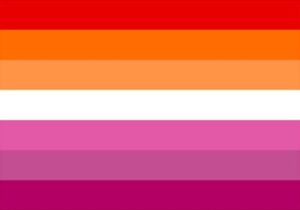
Meaning
The flag for gay women. The color representations are: dark orange for gender nonconformity, clear orange for independence, lightest orange for community, white for unique relationships to womanhood, lightest pink for serenity and peace, clear pink for love and sex, and dark pink for femininity.
Creation
2018 by Emily Gwen
History
This flag is also a redesign of the 2010 version by Natalie McCray, which only had shades of pink (and usually a lipstick mark in the top left), in order to be more inclusive. Another more simple version of this flag also exists that only features six stripes, which is known as the sunset flag.
Bisexual Pride Flag
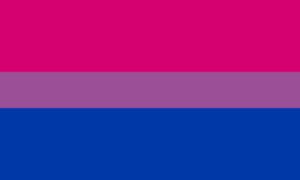
Meaning
The flag for people attracted to two or more genders. Pink represents attraction to the same gender, dark blue represents attraction to a different gender, and purple represents attraction to two or more genders (and not, often mixed up, pink for women, blue for men, and purple for other genders).
Creation
1998 by Michael Page and other artists
History
Michael Page created this design with a few other artists. He was inspired by the bisexuality symbol, created in 1987 by Liz Nania, which consisted of two blue and pink triangles (a reference to and reclamation of the pink triangle used to identify homsexual men in concentration camps) intersecting to become purple.
Pansexual Pride Flag

Meaning
The flag for people whose preferences are gender-blind. In reference to PPI, pink represents attraction to women, blue represents attraction to men, and yellow represents attraction to those who don’t identify with either gender.
Creation
2010 by Jasper V
History
The flag was created by a Tumblr user in 2010 in order to increase the visibility of pansexuality as distinct from bisexuality.
Asexual Pride Flag
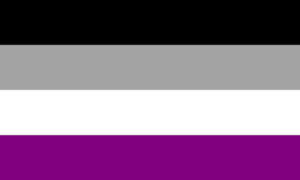
Meaning
The flag for people who do not feel sexual attraction. Black represents asexuality, gray represents demisexuality (the need for a strong bond to form before feeling sexual attraction), white represents the allies of the community, and purple represents the entire community.
Creation
2010 by the Asexual Visibility and Education Network
History
The design was decided on democratically by asexuals in online communities, and was subsequently published by the Asexual Visibility and Education Network in 2010. Other symbols existed before: an upside-down triangle half filled with black (used by AVEN 2002-2005), the same but outlined in purple and with a gradient from white to black inside (the AVEN triangle), or a heart half filled with black.
Aromantic Pride Flag

Meaning
The flag for people who do not feel romantic attraction. Dark green represents a lack of romance, light green represents aromanticism as a spectrum, white represents platonic, aesthetic, and queerplatonic relationships, gray represents demiromantic people, and black represents the sexuality spectrum.
Creation
2014 by Cameron (@cameronwhimsy, Tumblr)
History
An original version existed that featured green, yellow, orange, and black stripes. However, it was deemed too strenuous for the eyes, and the colors were toned down. A later design still featured yellow without orange, but was later abandoned due to a resemblance with the Jamaican flag. Finally, the current version passed the test of time.
Aroace Pride Flag

Meaning
The flag for people who are aromantic asexual, and feel neither sexual or romantic attraction, or aroace. According to its creator, Tumblr user aroaesflags, the shades of blue represent “the aroace identity as well as the spectrum of aroace identities and experiences”, white represents wholeness, yellow represents “love and relationships that exist outside of more conventional ideas of romantic and sexual relationships”, and orange represents community.
Creation
2018 by @aroaesflag (Tumblr)
History
Another flag design that originated on Tumblr, it was created “with the experiences of aroaces who don’t split their attraction in mind,” which is why the flag does not contain purple for asexual, nor green for aromantic. It is also called the sunset aroace flag.
Gender Identity Flags
Transgender Pride Flag
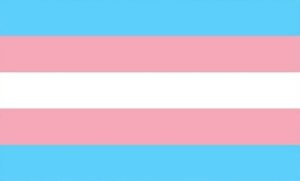
Meaning
The flag for people whose gender identity does not match with their gender assigned at birth. Light blue represents boyhood, pink represents girlhood, and white represents those who are intersex, transitioning, or those who identify with either gender. The colors are muted to represent rebirth.
Creation
1999 by Monica Helms
History
Helms got the idea from Page, who designed the bisexual flag the year before, to design a flag for her own community. The flag was first exhibited at the pride parade of Phoenix, Arizona, in 2000.
GenderQueer Pride Flag
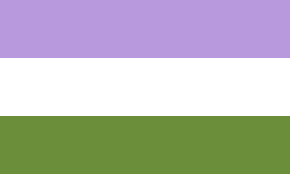
Meaning
The flag for people who are genderqueer, which is similar to non-binary. Lavender (a mix of pink and blue that traditionally represents women and men) represents queer identities and androgyny, white represents gender-neutral and agender identities, and chartreuse represents identities that aren’t in the gender binary.
Creation
2011 by Marilyn Roxie
History
This is the third and final version created by the artist in the same year. Unfortunately, this flag has since been colonized by people with ill intent, including the (gender critical movement, most notably in the UK) which has seen it fall in popularity and general replacement with the non-binary flag.
Non-Binary Pride Flag
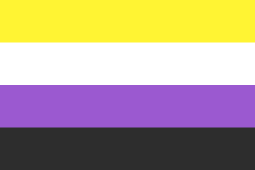
Meaning
The flag for people whose gender identity is outside the traditional binary. Yellow represents people who identify outside of the cisgender binary of male or female, white represents people who identify with more than one gender, purple represents people who identify as a mix of male and female genders, and black represents agender people.
Creation
2014 by Kye Rowan
History
The non-binary flag was created to differentiate itself from the genderqueer flag. Notably, this design features a lavender stripe, a color historically associated with the LGBTQ+ community.
Agender Pride Flag
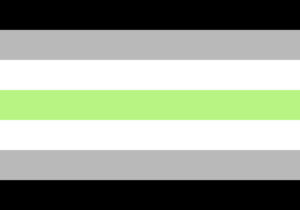
Meaning
A flag for people who do not identify as any gender. According to University of British Columbia, the black and white stripes represent a lack of gender, the gray stripes represent being semi-genderless, and the green stripe represents non-binary genders.
Creation
2014 by Salem X (Tumblr)
History
There is little known about the development of this flag, but its design closely resembles that of the aromantic flag, using the same colors.
Intersex Pride Flag
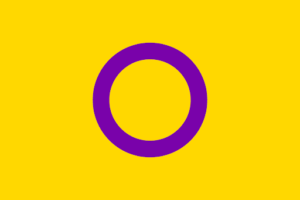
Meaning
The flag for people who are intersex, meaning that they do not fully fit the traditional biological traits of male or female. Yellow and purple are colors not traditionally associated with the binary gender colors of pink and blue, and the circle is “unbroken and unornamented, symbolizing wholeness and completeness, and our potentialities.”
Creation
2013 by Morgan Carpenter of Intersex Human Rights Australia (then known as Organisation Intersex International Australia)
History
Knowledge about intersex people is still lacking, despite representing 1-2% of the population. The mutilation of intersex minors is only illegal in six countries in the world: Malta, Germany, Greece, Iceland, Spain, and Portugal. This flag was created to represent the ongoing struggles of intersex people in the world, who still suffer surgeries and hormone replacement therapy without their consent – and sometimes, the knowledge of their parents – in a majority of countries in the world. This flag is for those who face these difficulties today. 2013 by Morgan Carpenter of Intersex Human Rights Australia (then known as Organisation Intersex International Australia)
Allyship Pride Flag

Meaning
The flag for the heterosexual and cisgender people who are allies of the LGBT+ community. The black and white stripes represent heterosexuality and cisgender identity, and the rainbow “A” stands for “ally” or “advocate.”
Creation
late 2000s
History
The flag emerged on a blog called Queer & Straight Allies for Equality (Queer & SAFE), an Australian Queer collective which sought to enlist the help of the non-LGBTQ+ community. The presence and support of allies has never gone unnoticed for the LGBTQ+ community. Because heterosexual cisgender individuals make up the majority of the population, their help is needed to improve the rights of LGBTQ+ rights throughout the world.
Many More Flags… Or None At All
There are many more flags than we have time to discuss in this article. Some also take into context the history of non-heterosexuality and non-binary genders specific to one culture or country, such as the Native American two-spirit flag. It is also common for individuals to mix two or more flags in order to make one that best represents them. The importance of any flag is the sense of belonging to whoever flies them. Some also don’t like to be defined by a flag, and that is also valid. No matter what flag you fly, you will find people flocking to your banner with love and support.

